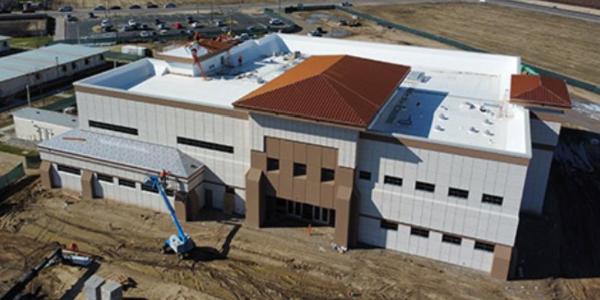Unlock the benefits of on-site roll forming

By Dani Sheehan.
Master the complexities of on-site roll forming from installation to site considerations and elevate your commercial metal roofing business.
In a recent episode of Roofing Road Trips®, Heidi J. Ellsworth sat down with Jeff Haddock and Jeffrey Medeiros from AEP Span to explore the benefits and considerations of on-site roll forming for metal panels. For contractors working with large commercial metal roofs, this method offers unique advantages, though it requires careful planning and the right resources to ensure smooth installation. Discover how on-site roll forming could elevate your commercial business and set you apart from your competition.
On-site roll forming is especially useful for projects requiring panels longer than 45 feet, which can be difficult to transport. Instead of cutting panels to shorter lengths and creating additional seams, on-site roll forming allows for continuous panels, eliminating potential leak points and improving overall performance. Jeff explained the durability of these continuous panels, sharing, “Soldered metal panels don’t typically leak. It’s everything else that does – your flashing, penetrations, things like that. With a solid metal panel, you’re not going to get those issues.”
Another advantage is the ability to create custom panel lengths on-site, offering greater flexibility and efficiency, especially for large commercial projects with extended roof runs. Standing seam panels, which don’t require through-fasteners, are ideal for these applications. AEP Span’s Span Lok roll forming product uses a mechanically seamed concealed fastener, enhancing both the durability and aesthetics of the roof.
However, contractors must also consider the logistics and costs associated with this process. Without discouraging companies from the process, Jeffrey paints a realistic picture of the challenges involved. “Number one, there’s going to be an additional cost moving the roll former to the site. However minimal it might be, you still have to get that roll-form trailer to the site,” he began. “Number two, the coil has to be shipped to the site. Number three, you have to have a long enough space and area to run out the panel to its full length.” Lifting these panels onto the roof typically requires a crane and as Jeffrey warns, the weather needs to be just right, or you could damage the entire panel.
But here’s the good news: if you carefully plan for these factors, the long-term efficiency and quality of the final installation will make it all worthwhile. By mastering this process, you’ll set your business apart and create a specialized team that thrives in on-site roll forming projects.
Read the transcript or Listen to the podcast to learn more about on-site roll forming and take the next step to standing out from your competition.
Learn more about AEP Span in their Coffee Shop Directory or visit www.aepspan.com.
About Dani
Dani is a writer for The Coffee Shops and AskARoofer™. When she's not writing or researching, she's teaching yoga classes or exploring new hiking trails.























Comments
Leave a Reply
Have an account? Login to leave a comment!
Sign In